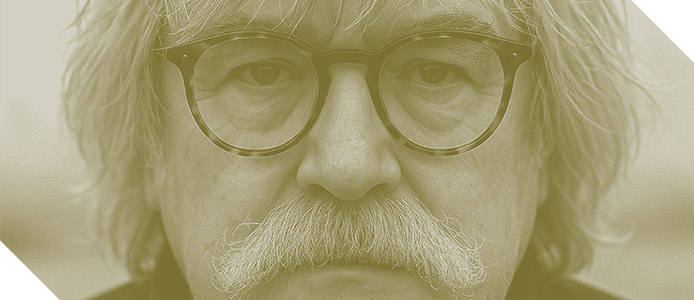Revolutions – Times of War, Times of Peace

Music of wartime, music that aspires to peace. Music that seeks to soothe in times of conflict or to reconcile opposing forces.
Harmony is the key word in the great Symphony No. 1 “Concordia” by Canadian composer Samy Moussa, to whom MITO SettembreMusica dedicates a portrait with a pair of concerts. Composed for the city of Montreal on the occasion of its 375th anniversary, the work draws on the city’s motto “Concordia salus” – that is, well-being through harmony – which, according to the composer, means a “union of hearts, a metaphor for the orchestra and for music itself.”
A celebration of virtue’s triumph over the forces of evil, Antonio Vivaldi’s oratorio Juditha Triumphans was composed to commemorate the Republic of Venice’s victory over its historic enemies during the siege of Corfu in 1716. Meanwhile, The Armed Man: A Mass for Peace by Karl Jenkins (1999) is a secular mass dedicated to the victims of the Kosovo War, and makes use of texts from various cultures and historical periods, including the medieval L’homme armé, the Koran, sacred Christian texts, and poems by authors such as Rudyard Kipling and Alfred Tennyson.
“Inextinguishable,” like humanity’s struggle against destruction and death, is the title of Carl Nielsen’s Symphony No. 4, composed between 1914 and 1916, as the world was being consumed by World War I. A multi-part concert featuring two choirs in the cities of Milano and Torino takes audiences on a musical journey featuring works by Giovanni Pierluigi da Palestrina, Paul Hindemith and Arvo Pärt, which resembles a modern-day procession that is musical in form and, inevitably, spiritual in nature.
Scheduled events
Antonio Vivaldi / Juditha triumphans, oratorio per soli, coro e orchestra
Orchestra e Coro dell’Accademia del Santo Spirito
Lucia Napoli, Stefania Balsamo, Roberta Garelli contralti
Luca Parolin controtenore
Paola Valentina Molinari soprano
Luca Ronzitti direttore
Pietro Mussino maestro del coro
Free Admission
Musiche di Leonard Bernstein, George Gershwin, John Williams
Obiettivo Orchestra
Donato Renzetti direttore
Revolutionary Pass
Assigned Seating €5
I 40 anni del “giornale della musica”
Riflessioni su come è cambiato
il mondo musicale dal 1985
Musiche di Samy Moussa
Orchestra Sinfonica Nazionale della Rai
Tito Ceccherini direttore
Gold and Silver Carnets
Symphony Pass / Revolutionary Pass
Assigned Seating € 10
Karl Jenkins
The Armed Man – A Mass for Peace
Orchestra Teatro Regio Torino
Coro Valdese di Torino
Coro dell’Istituto Musicale “Arcangelo Corelli” di Pinerolo
Giulia Bolcato soprano
Annunziata Vestri mezzosoprano
David Astorga tenore
Stefano Marchisio basso
Nicola Foron direttore
Walter Gatti maestro del coro
Gold Carnet
Revolutionary Pass
Assigned Seating €10
Musiche di Rued Langgaard, Hans Abrahamsen, Carl Nielsen
Orchestra Sinfonica Nazionale della Rai
Liv Redpath soprano
Thomas Dausgaard direttore
Gold and Silver Carnets
Symphony and Revolutionary Passes
Assigned Seating € 10
CORO SINFONICO DI MILANO
Musiche di Giovanni Pierluigi da Palestrina
Coro Sinfonico di Milano
Luigi Ripamonti pianoforte
Massimo Fiocchi Malaspina direttore
Free admission with reservation at www.mitosettembremusica.it starting Monday, 1 September 202
Giovanni Pierluigi da Palestrina 500 anni
Coro dell’Accademia Maghini
Solisti del Consort Maghini
Elena Camoletto direttore
Ingresso gratuito
Free Admission
CORO SINFONICO DI MILANO
Musiche di Brahms, Mendelssohn, Schumann
Coro Sinfonico di Milano
Luigi Ripamonti pianoforte
Massimo Fiocchi Malaspina direttore
Free admission with reservation at www.mitosettembremusica.it starting Monday, 1 September 202
Giovanni Pierluigi da Palestrina 500 anni
Consort Maghini
Claudio Chiavazza direttore
Free Admission
Giovanni Pierluigi da Palestrina 500 anni
Consort Maghini
Solisti del Coro dell’Accademia Maghini
Claudio Chiavazza direttore
Free Admission
CORO SINFONICO DI MILANO
Musiche di Hindemith, Barber, Pärt
Coro Sinfonico di Milano
Luigi Ripamonti pianoforte
Massimo Fiocchi Malaspina direttore
Free admission with reservation at www.mitosettembremusica.it starting Monday, 1 September 202
BRUNO TADDIA
ANDREA CORAZZIARI
Rivoluzioni
Francesco Paolo Tosti vs Anton Webern
Gaetano Donizetti vs Gustav Mahler
Bruno Taddia baritono
Andrea Corazziari pianoforte
Gold Carnet
Pass
Assigned Seats € 10
Without Blood There Is No Cause
The body of Julius Eastman
Regia e spazio scenico Fabio Cherstich
Drammaturgia musicale Oscar Pizzo
Video di Francesco Sileo
Gold Carnet
Revolutionary Pass
General Admission €10
Without Blood There Is No Cause
The body of Julius Eastman
Musiche di Monk, Eastman
Regia e spazio scenico Fabio Cherstich
Drammaturgia musicale Oscar Pizzo
Video di Francesco Sileo
Gold Carnet
Assigned Seats €10








